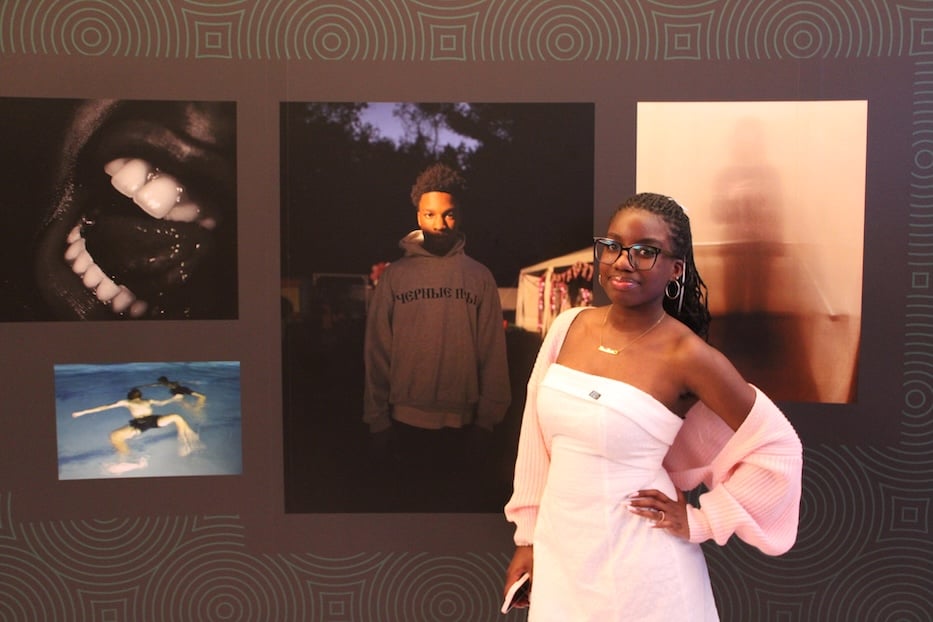
Grayce Howe Photos.
Bria Biney stood in the bottom floor of the Yale Schwarzman Center, smiling eagerly as she prepared to cross a cultural threshold. Shoulder to shoulder with family members—all hugs and smiles—she stepped forward, and through a photographic portal. She could look at the current moment with fresh eyes.
A senior at Engineering and Science University Magnet School (ESUMS), Biney is one of 13 young photographers in The View From Here: Accessing Art Through Photography, an exhibition based on the eponymous five-month long program at the Yale Center for British Art (YCBA). For almost half a year, the photographers—all high school students, all from greater New Haven—have met to learn about photography, practicing it themselves on their cameras and cell phones.
The program is run by James Vanderberg, educator for high school, college and community engagement at the Yale Center for British Art (YCBA). The exhibition runs at the Yale Schwarzman Center, 168 Grove St., through Jan. 4 of next year. It is one of three exhibitions based on the program: the others are accessible online through the YCBA and outside the museum, where a lighted display looks out onto High Street in downtown New Haven.
“This is my favorite part, it feels really powerful,” Biney said of the exhibition, meant to be the culmination of the program. “I’m glad everyone’s here, it’s fun to be here with everyone.”
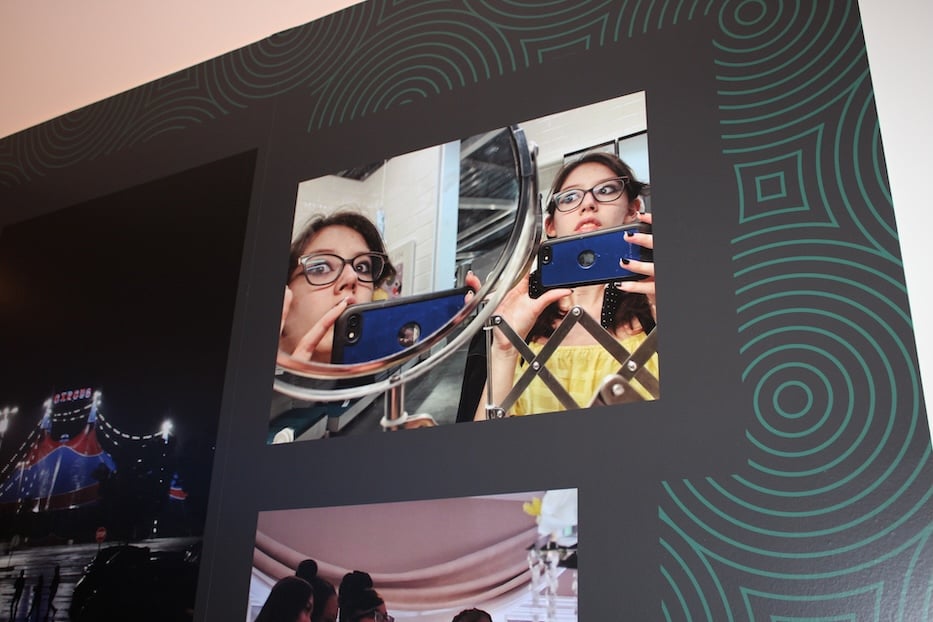
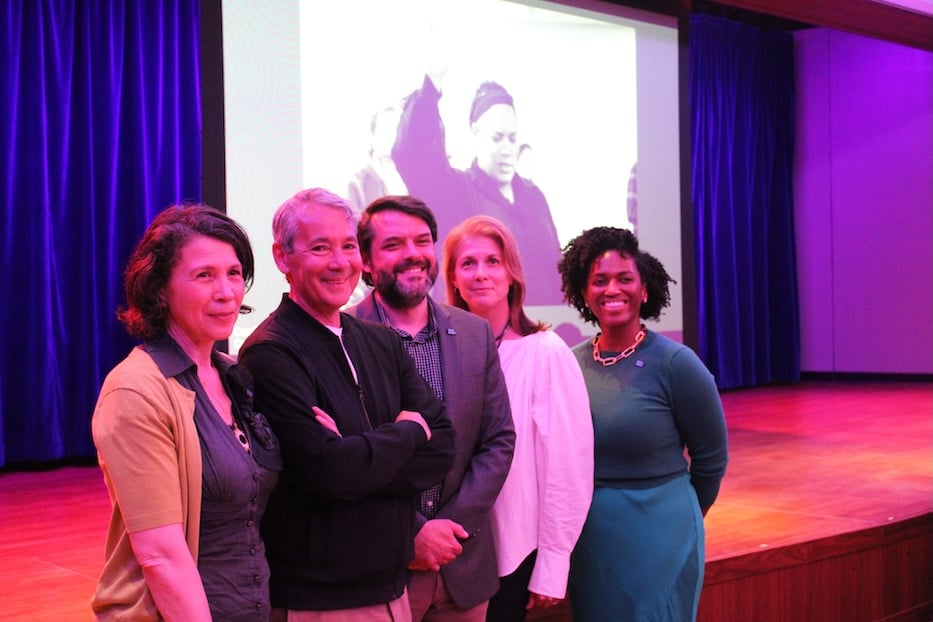
Top: Hera Jermyn’s self portrait. Bottom: Martina Droth, director of the Yale Center for British Art, with Paul Messier, the director of the Lens Media Lab, museum educator James Vanderberg, Schwarzman Center Executive Director Rachel Fine, and Carlynne Robinson, the exhibitions and bookings manager at Yale Schwarzman Center.
“I hope they leave the program feeling like they are creative people,” Vanderberg said. “Once you’re an artist it gets inside of you and I hope they feel that.”
Participants include Biney, Natalie Clorio, Ameiya Gatling-Cooper, Marasi Elsheikh, Camila Ibarra, Hera Jermyn, Brendan Lopez, Danyele McCrory, William Perez, Yoselin Paola Perez, Betsy Roblero, TJ Samuel, and Trinity A. Stephens.
Launched in 2021 as a collaboration between the Yale Center for British Art and the Lens Media Lab at the Institute for the Preservation of Cultural Heritage (read about that first cohort here and here), The View From Here is both a crash course in photography and a chance for young people, most of whom are New Haven Public Schools students, to take ownership of a narrative that often excludes young voices.
Over five months (in those first years, it was four months), students both learn about the history of photography and respond to a series of artistic prompts, from self-portraiture to street photography to long, layered exposures taken on professional DSLRs. Since starting in 2021, the YCBA has turned out four cohorts. It began collaborating with the Yale Schwarzman Center last year.
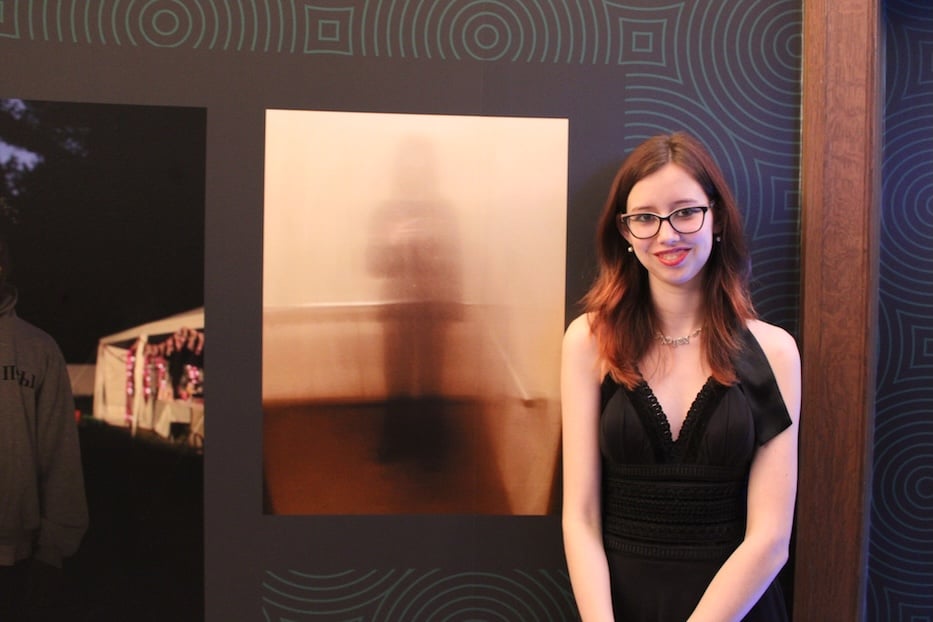
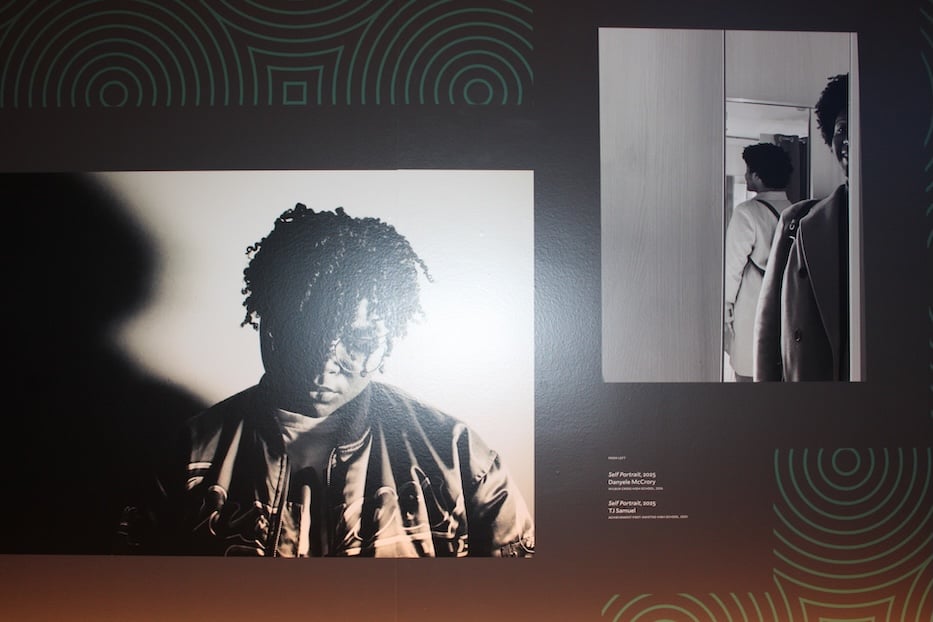
Top: Jermyn with their photo Schrödingers Girl. Bottom: Some of the work on display.
At an opening reception for the 2025 show earlier this month, the creativity of young people felt like a force to be reckoned with. That the exhibition comes as both the arts and public education are under attack is not lost on many of the young photographers.
“Now that I’ve been through the program it’s like, everything’s a photo,” said New Haven Academy junior Hera Jermyn. “But it has broadened my idea of photography, which I am grateful for.”
Standing in front of their piece Schrödinger’s Girl, which was their submission to the “photo settings” prompt, Jermyn reflected on how the program challenged students to stretch their creativity. Especially using their phone camera, which is the program's primary focus.
The photograph resembles a blurry Jermyn standing in a mirror, taking a photo of their reflection. The photo is mostly warm tones of beige and tan, with Jermyn dressed in dark shades. Their silhouette becomes slightly more transparent towards the top of their body.
So too in Biney’s l’amour dans le noir, which depicts a photo of her brother, Kaden. The piece portrays him standing outside at dusk, standing out clearly against a blurred background. He is mostly covered in a shadow, while the left side of his face is hit by a light, glowing under it.
That many of the images are taken on students’ cell phones now seems like a standard part of the program. When The View From Here began in the first years of the Covid-19 pandemic, staff found it the easiest for students to use their own cell phones, a strategy that has since bloomed into a satisfying artistic tool (many also use their own cameras, of which the program is also supportive).
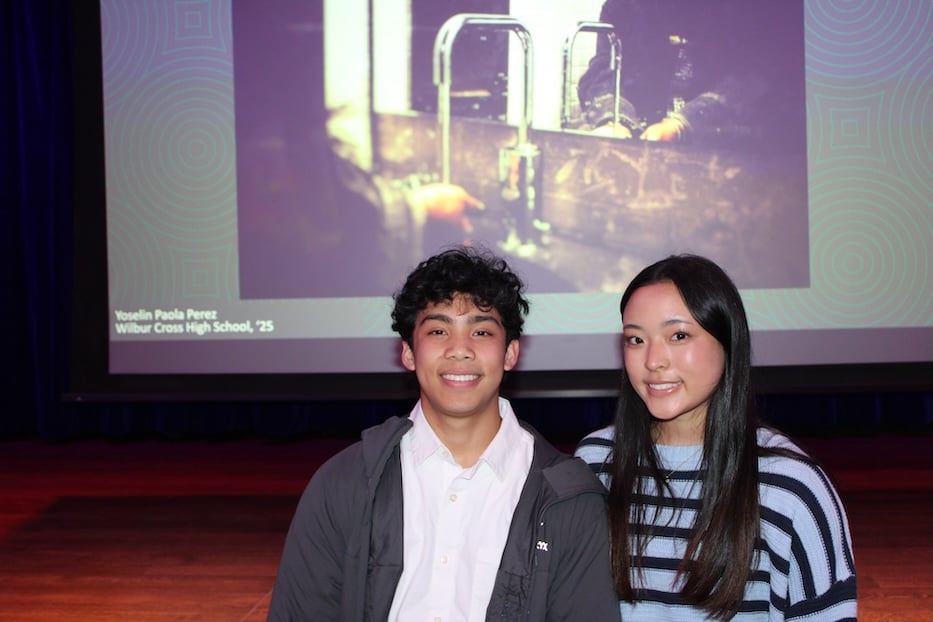
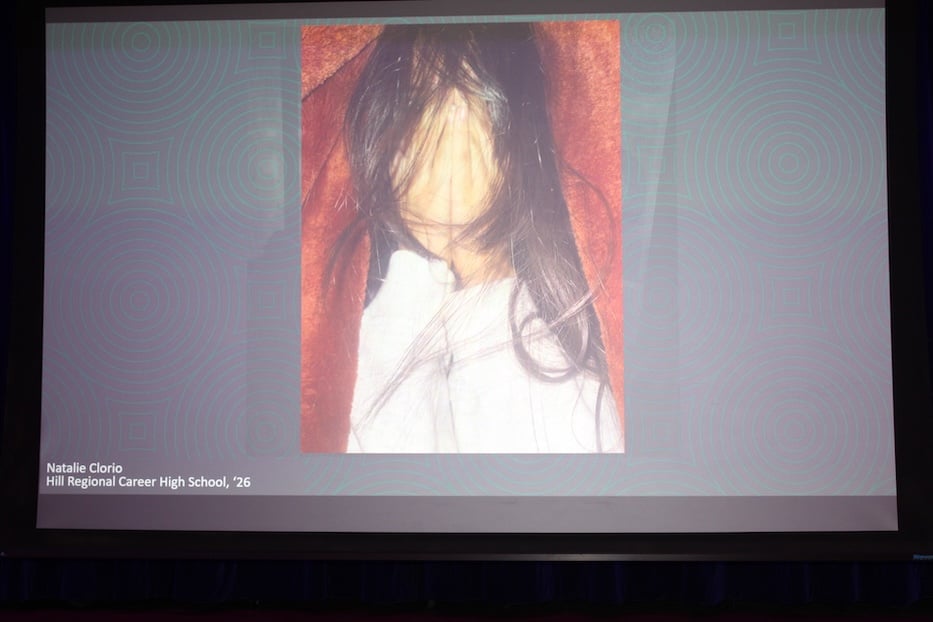
Top: Participant Brendan Lopez and friend.
“It’s in their pocket, and it’s comfortable,” Vanderberg said. “They’re more comfortable whipping their phone out than they might be with a big fancy camera that’s potentially intimidating.”
“If you look at some of their photographs they’re really capturing small moments, and searching for things,” Vanderberg added. “They are very exploratory, they’re self-reflective, and they’re emotional.”
Ssme of the most unique photos on display are students’ self-portraits. Each one has its own flair: some capture students’ reflections in the mirror, some are taken by others with the individual posing, some have their faces covered, some are in black and white. The emotion and thought behind each portrait is beautiful.
At the opening reception, the exhibition was full the whole night. Parents and grandparents of participants crowded around photos, along with friends and peers. Attendees cheered on the hard work and dedication each participant brought to their work. The 13 participants, meanwhile, had their debut as artists and photographers, a title they will hold close for the rest of their lives.
“For many families this achievement is beautiful,” said Schwarzman Center Visiting Services Manager Christian Ponce, “For many students it may change their life.”